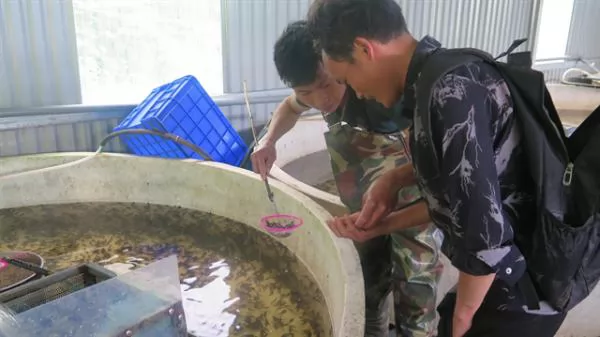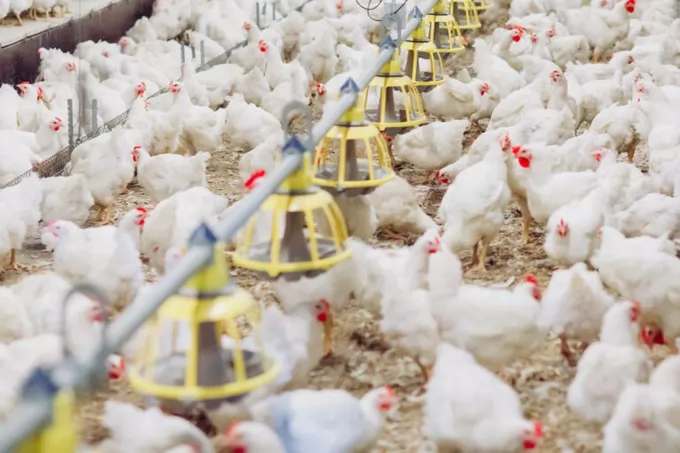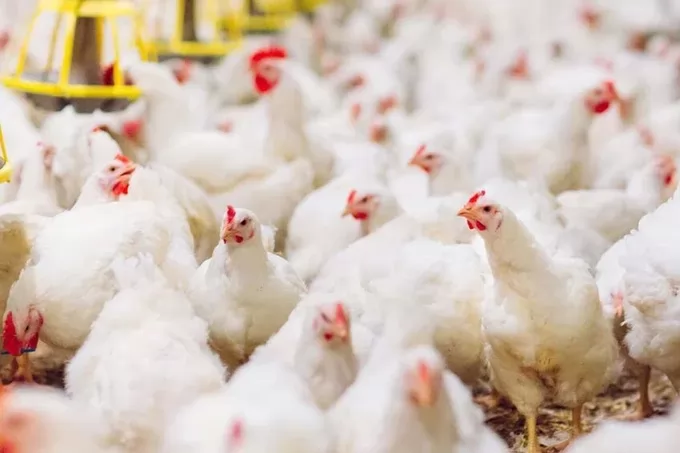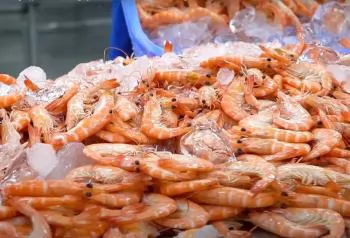Lào Cai enhances cold-water fish production

Thức Mai salmon farm in Ngũ Chỉ Sơn Commune of Sa Pa Town owned by Phạm Thị Mai supplies fingerlings and fish bran to and buys fish from over 30 households in the area. VNA/VNS Photo
LÀO CAI — Many farms in the northern mountainous province of Lào Cai have implemented measures to enhance the production and trade of cold-water fish.
The cold-water fish producers realised that to avoid risks, attaching traceability stamps and promoting co-operation between production and processing are effective solutions to raise the economic value of cold-water fish products and deal with cheap imported products.
Currently, the Lào Cai Cold Water Fish Association manages 55 cold water aquaculture facilities with a volume of about 17,000 cu.m of water, mainly in Sa Pa, Bát Xát and Văn Bàn districts, to supply to the market over 335 tonnes of fish annually.
Investing in cold water fish farming not only costs billions of đồng but also requires strict factors regarding natural water sources, imported breeds and high prices of fish feed.
Thus, to minimise risks, this industry must have close links from production, consumption to processing so as to increase incomes for cold water fish farmers.
The COVID-19 pandemic was a wake-up call to help cold-water fish farmers in Sa Pa District become more aware of professional fish farming, linkages, and more professional investment.
As there was little space to expand the fish breeding areas, many large-scale farms or co-operatives in Sa Pa have linked with individual farmers to jointly develop the cold-water fish industry.
Thức Mai salmon farm in Ngũ Chỉ Sơn Commune of Sa Pa Town owned by Phạm Thị Mai supplies fingerlings and fish bran to and buys fish from over 30 households in the area.
In the past, cold water fish products at this facility were easily consumed, but since the outbreak of the pandemic and a surge of imported sturgeon, the farm has faced many difficulties, such as feed price hike, decreasing fish prices and reduction of consumption due to the drop in tourists to Sa Pa.
To solve this situation, intensive processing was the solution chosen by Thức Mai salmon farm as a new direction to diversify the product chain from the cold-water fish and has shown initial efficiency.
Now, every day, the farm processes and consumes about 1 tonne of commercial salmon and 50 processed products such as smoked salmon, salmon sausage, salmon paste rolls and dried shredded salmon.
The processed products are consumed throughout the country and have proven popular.
Since implementing the intensive processing of products, Mai was assured about the output for the product.
“In order to ensure the prestige of the product and have a long-term foothold in the market, I said the products must be tasty and clean,” said Nguyễn Thị Mai.
“I just bought fresh and safely-raised fish,” she said.
“Therefore, households associated with my farm must commit to strictly comply with fish farming techniques as per regulations,” the farm owner said.
Due to the characteristics of salmon, the big risk of farmers was not being able to sell the fish.
So, in the process of production and trading co-operation, each farmer had to comply with the breeding schedule at a different time, according to Mai.
Since then, the quantity of fish for sale was not too high, helping to guarantee the price and quality of fish, she said.
When the prices of salmon dropped to VNĐ140,000 (US$6) per kilo, households could share bran sources or find chances to consume products at big supermarkets.
Therefore, bringing the cold-water fish products into big supermarkets, penetrating business chains and developing markets in the long term were vital solutions, according to Mai.
Traceability stamping
To gradually affirm the brand for cold-water fish of Lào Cai, the Lào Cai Cold Water Fish Association has co-ordinated with Smartcheck Technology Joint Stock Company in Hà Nội to pilot the attachment of 15,000 traceability stamps for sturgeon and salmon at Sa Pa Cold Water Fisheries Research Centre, Ô Quý Hồ Cold Water Seafood Processing Co-operative, and Thức Mai Salmon Farm.
After affixing the traceability stamp, the production facilities would be able to manage their product lines, protect the brands, prove the origins as well as ensure transparency of all necessary information.
Not only a pioneer in intensive processing, Thức Mai Salmon Farm is also the first establishment in Lào Cai to apply traceability stamps to more than 5,000 sturgeons.
“The sturgeons imported in large quantities into the Vietnamese market recently had a significant impact on the establishment's consumption,” said Mai.
“The traceability stamping has helped the establishment's salmon products be welcomed in many provinces across the country and act as a passport to penetrate major supermarkets,” said Mai.
“In fact, consumers could not distinguish between domestically-raised sturgeon and imported and smuggled ones. Therefore, stamping would solve the issue and gradually build a brand for cold-water fish of Sa Pa,” she added.
Chairman of the Lào Cai Cold Water Fish Association, Phạm Bá Uyên said that consumers now just need to use smartphones to scan the QR code to trace the origins and the fish raising process.
The traceability stamp would be deployed by many cold water fish farming facilities in Lào Cai to protect the brands and make give consumers confidence, said Uyên.
The solutions of stamping traceability and promoting the linkages in the production and processing of cold-water fish in recent years were in line with the general spirit of the project on developing a network of processing agricultural and forest products of Lao Cai Province in the 2021 – 2025 period.
The project aims to improve management capacity, production efficiency, improve product competitiveness and orient the consumption market and products in the agro-forestry product processing sector of the province.
The project sets out a goal of 100 per cent of products of the chain of safe agricultural, forestry and fishery production, processing and consumption in the province using QR codes on the Agricultural Traceability Information Transparency System managed by the Lào Cai Department of Agriculture and Rural Development.
And 80 per cent of establishments of preliminary and intensive processing vegetables, fruit, meat, eggs and aquaculture products must use modern machinery and equipment, and apply advanced technologies in preserving products.
To achieve the above objectives, Lào Cai has encouraged investment in processing agricultural products, restructuring of products, promoting the application of science and technology to the processing and preservation of agricultural products so as to improve product quality, ensure food safety and promote market expansion.
Additionally, the local authority would continue to complete and renew mechanisms and policies to create a favourable environment for all economic sectors to participate in the development of agricultural and forestry product processing industries, especially policies relating to land, credit and markets, promote administrative reform and improve the effectiveness and efficiency of state management in the area. – VNS
Maybe you are interested

Changes to ammonia emission factors for UK poultry farmers
Updated ammonia emission factors for UK poultry and pig producers have been introduced by the Environment Agency.

Russia to ban free-range poultry
'The new rules prohibiting free range make organic production impossible,' the Union said.

Vietnam taps into growing Australian demand for shrimp
Amid tariff risks and growing trade barriers in the U.S. market, Australia is emerging as a promising destination to sustain the growth momentum of Vietnam's shrimp exports.





